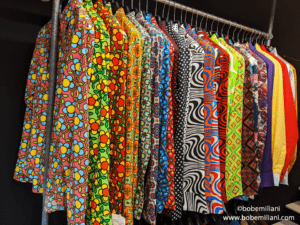As a Lean person, you are an iconoclast — a Type 1 iconoclast. Type 1 iconoclasts seek to attack or destroy settled ways of thinking and doing things. You disrespect certain traditions and believe it is important to dismantle that which stands in the way of needed progress in both leadership and management practice. Yet, for all the fervor for Lean, you were raised by parents and educated in schools to succeed within the established system, not change it. You must navigate the contradictions and when faced with a hard choice between being a Type 1 iconoclast or a conformist, you likely choose the prevailing standards and customs; the status quo of classical management. You realize that existing hierarchies are difficult to change let alone conquer, and that they expose you to unbearable risks. But still, you reject settled ways of thinking and doing and keep pushing forward. This is the Type 1 iconoclasm of Lean. Don’t give up. And don’t be closed-minded.
Type 1 iconoclasts enter the field of Lean by agreeing with its basic premise, problem definition, concepts, and methods. They begin with the status quo of Lean and seek to learn about the field, perhaps adding something to the field through hands-on improvement work or protracted reportage of what Toyota or other “true north” organizations have done. This earns one favorable repute because it maintains continuity and contentment. This is the preferred domain of Type 1 iconoclasts.
In contrast to the iconoclasm of Lean, there is also the iconoclasm within Lean. These are Type 2 iconoclasts. They are much less common than Type 1 iconoclasts. Iconoclasm within Lean embraces the view that settled ways of thinking and doing things within the realm of Lean must also be challenged if progress with Lean is to be achieved — progress well beyond that which has been achieved to-date. It means to explore new ideas and discover ugly truths so that Lean can advance beyond its provincial realm.
Type 2 iconoclasts start with agreement and as they gain knowledge and experience come to disagree with certain elements of the basic premise, problem definition, concepts, or methods. It represents an evolution in thinking whereby one scrutinizes accepted wisdom. They take contradictory views or establish a new set of claims that challenge settled ways of Lean thinking and doing things that produce new knowledge. This earns one disrepute because it produces displeasure, bewilderment, animosity, and discord. Type 2 iconoclasts are troublemakers in the eyes of Lean hierarchy and power structures.
Rather than being seen as deviant, both Type 1 and Type 2 iconoclasm should be understood as thoughtful styles of expression that produce useful new knowledge because they both employ the fundamentals of knowledge-making:
- Evolutionary perspective of continuous change
- Holistic dynamic systems
- Productive work
- Scientific thinking
These four knowledge-making practices (KMP) are the basis of human creativity and imagination; they encompass the search for facts, test assumptions, check for cognitive biases, and probe for illogical thinking. In contrast, the four knowledge-preserving practices (KPP) listed below shun originality or the extension of original thinking within established domains of knowledge:
- Static perspective of status quo
- Atomized components
- Nonproductive work
- Preconceptions
The iconoclasm of Lean is characterized by KMP. But the situation is different for iconoclasm within Lean, which is characterized as KPP. In other words, Type 2 iconoclasm is rejected as if it is not a knowledge-making practice equivalent in stature to Type 1 iconoclasm. Yet Type 2 iconoclasm utilizes the same knowledge-making apparatus as Type 1 iconoclasm. The difference is that it questions the unquestionable — the settled ways of Lean — and in doing so creates new knowledge. As such, it explores territory that Type 1 iconoclasts fear to go or fear to know because of the uncomfortable truths that it exposes. Movements that cannot face up to their own truths, and their own need for continuous improvement, have nowhere to go but sideways, down, or out.

